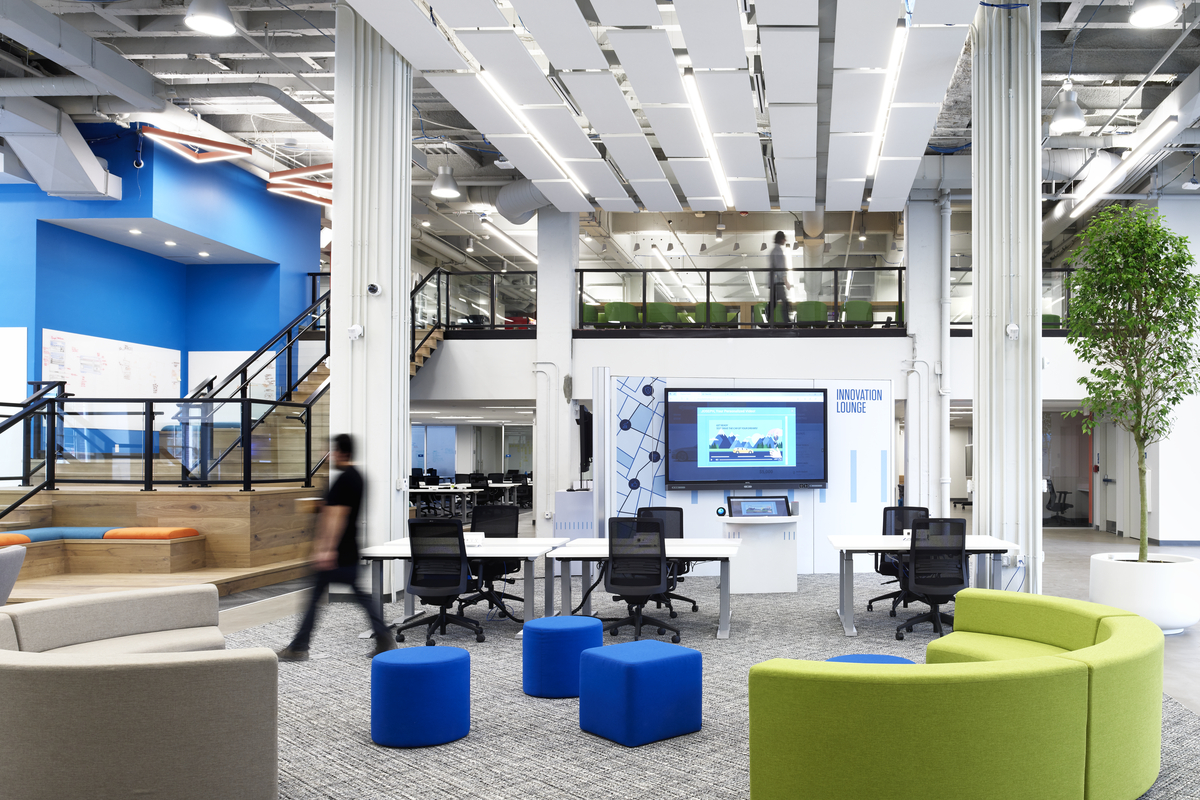
To thrive and grow, organizations need to innovate. This happens when people come together to explore, collaborate, and experiment.
What kinds of spaces inspire discovery and advance progress?
Many organizations are investing in Innovation Centers, or Research and Development (R&D) facilities. These dynamic workspaces allow for intellectual collisions, where a diversity of talent can test, share, and pilot research projects. Privacy and security are top priorities as potential new products are developed and tested.
Maker’s Spaces or Tech Hubs are similarly secure facilities. The design and building of prototypes are common. You may see 3D printers and experience a workshop feel in pursuit of the “next best thing.”
Customer Experience Centers are less about what they are selling, and more about the service experience. For example, product sales may be dependent on the quality of technical and maintenance service. These immersive and multifaceted spaces fit training simulations and welcome customers into the process, building relationships along the way.
Six Essential Design Components
As creatures of habit, humans love daily routines, and we are all susceptible to distractions. To inspire new ways of thinking, you need spaces to orbit outside regular patterns and comfort zones. Maker Spaces feel different and evoke a sense of exploration. They allow teams from across the globe, along with clients, vendors, and experts, to share and shake up the status quo.
Whether you are a research university or a private enterprise, there are six essential elements to consider for your Innovation Center:
-
Flexible/User-Controlled Space
-
Integrated Technology
-
Low-Tech Tools
-
Multiple Spaces
-
Hospitality
-
Storytelling
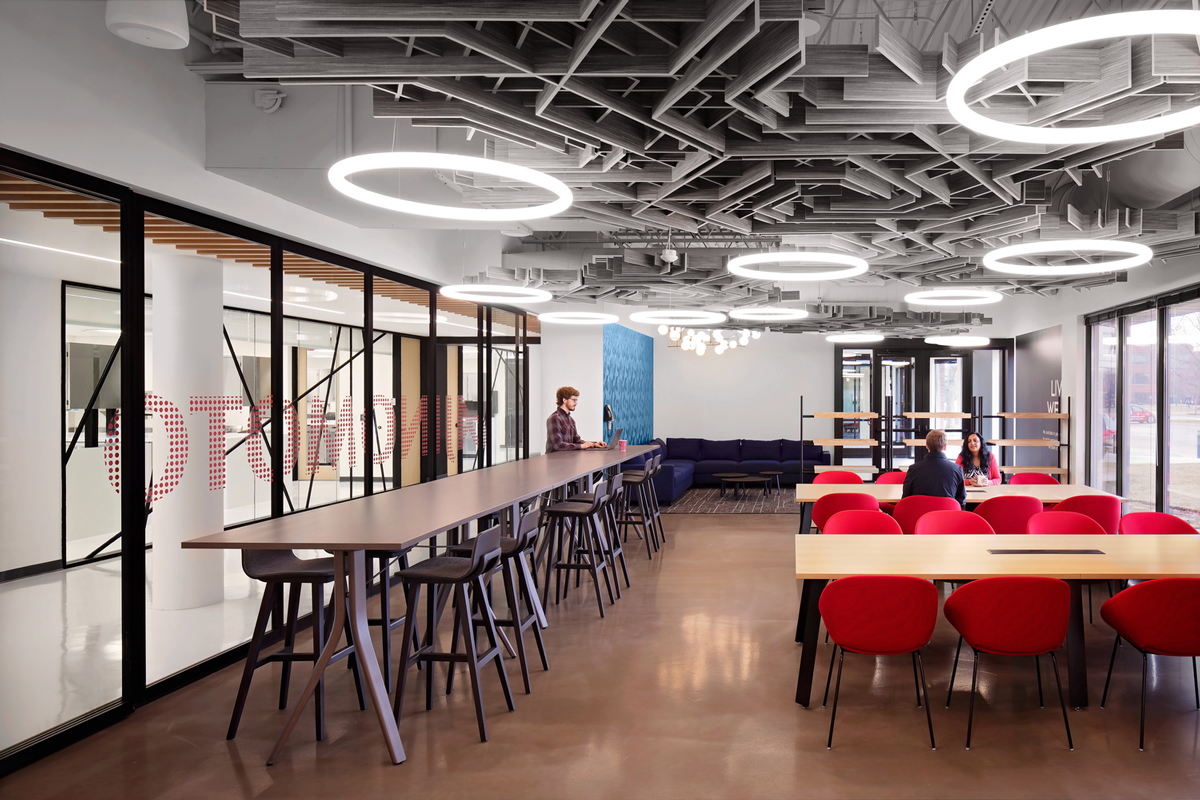
Flexible/User-Controlled Space
Your space should be flexible enough to adapt to many types of meetings, and those that will evolve over time. Movable furniture and walls make it easy to change from classroom style to small scrums to stand-up meetings to demonstration events.
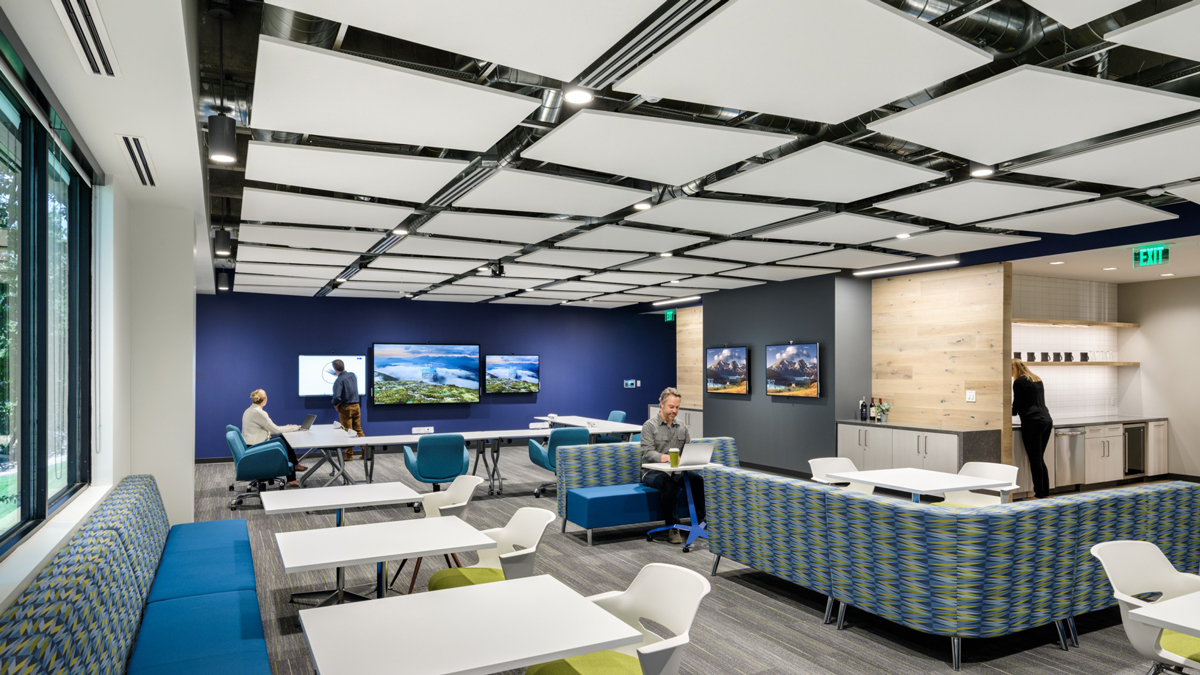
Integrated Technology
Your infrastructure must allow you to evolve over time. Anticipate the need for power and connectivity everywhere in the physical space. Audio and visual equipment, along with 3D printers and other future technology will need power and broadband. Rather than do a custom build-out for TVs or monitors (which will soon be outdated), invest in infrastructure to support mobile and non-fixed technology. Your teams will appreciate the convenience and agility of the space.
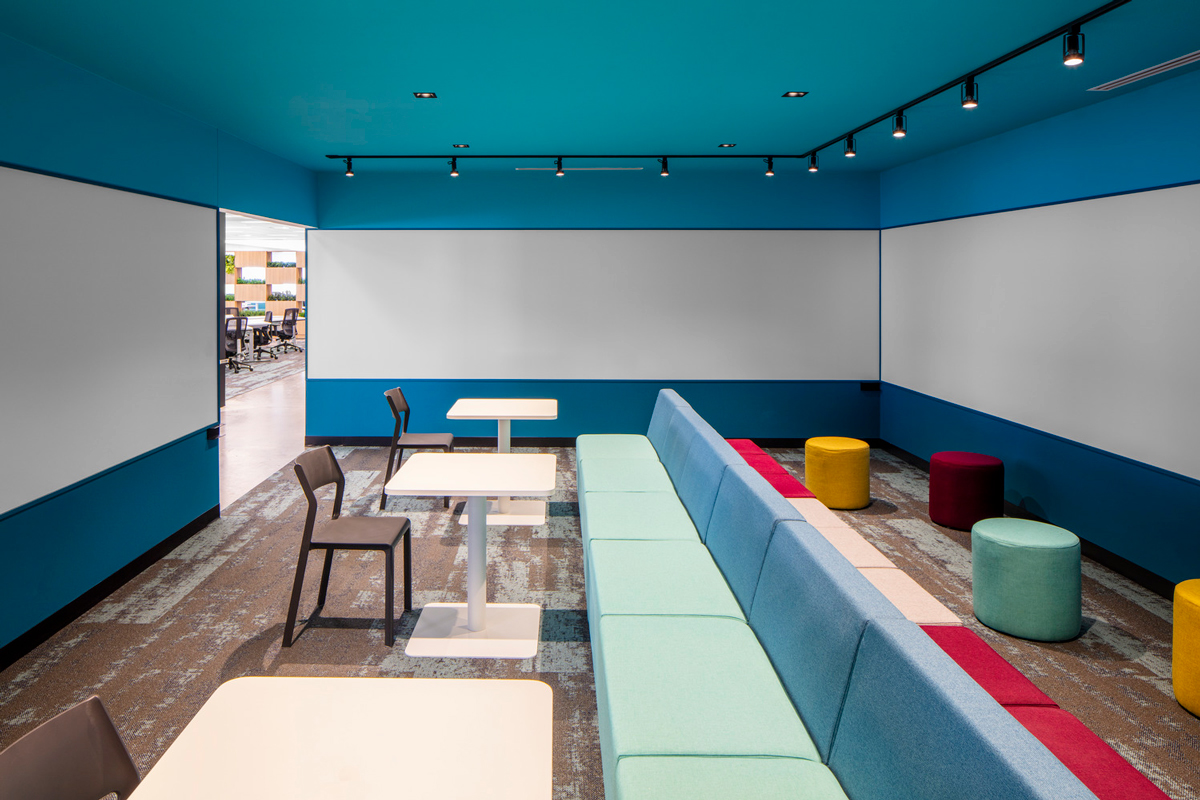
Low-Tech Tools
This may seem counterintuitive, but old-school white boards, pin-up walls and displays are important to Innovation Centers. Activity-based collaboration gets people up and moving, engaging different parts of the brain to share ideas and discover solutions.
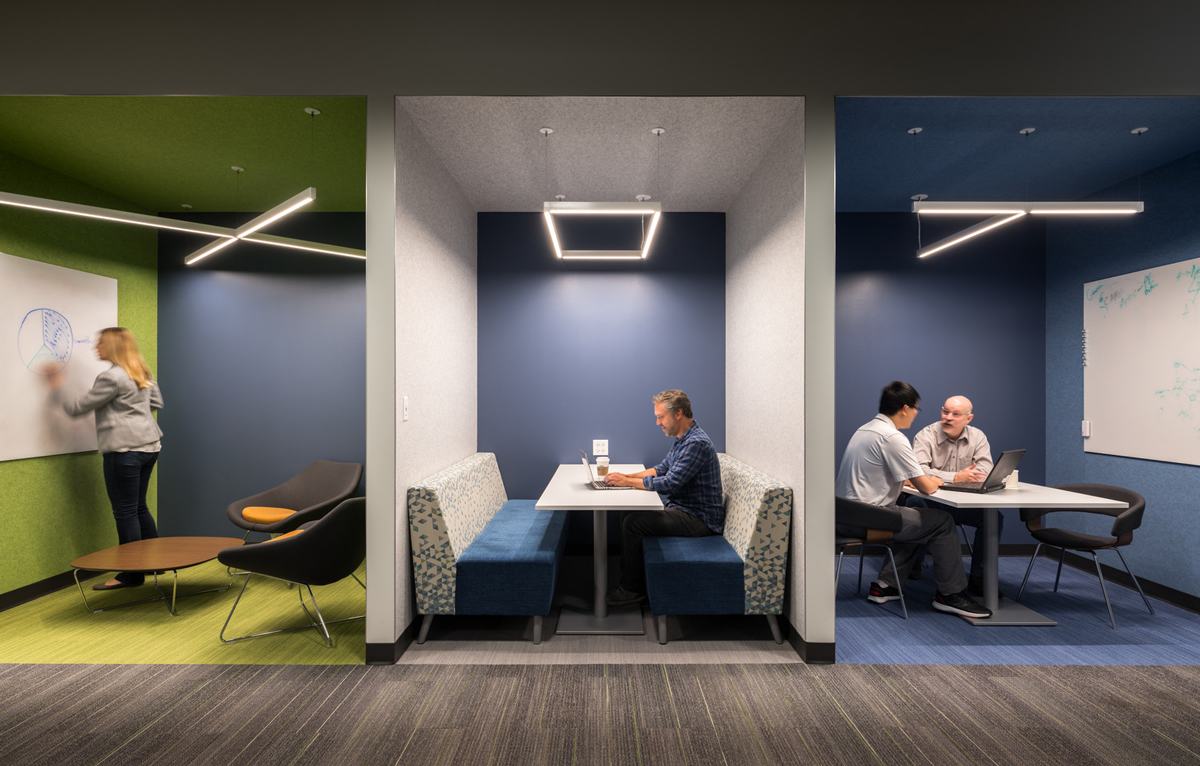
Multiple Spaces
When you think of an Innovation Center a large, open space may be the first thought. There is often a diversity of spaces to meet people in the moment. These include small, private meeting rooms. Phone booths for quick calls you can make on campus and small group areas for teams to brainstorm, plan and move projects forward.
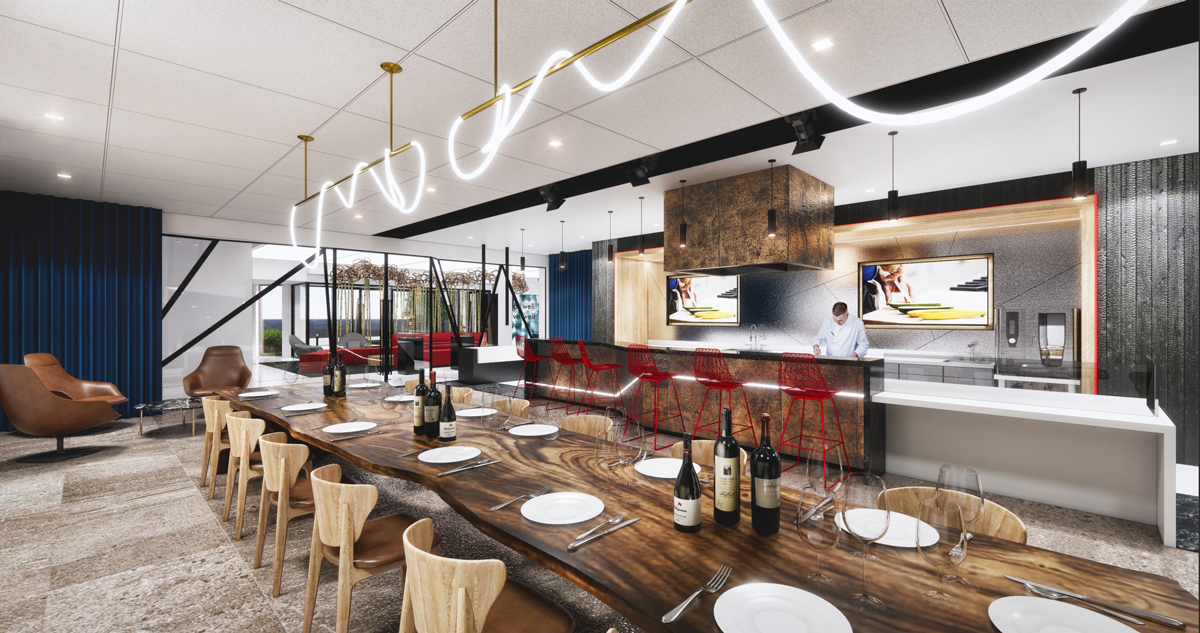
Hospitality
Food and beverage help fuel ideas. Whether it is the napkin sketch at lunch or the serendipitous conversation with coffee, people appreciate hospitality areas. Close by and convenient, create that kitchen, “heart of the home,” places that keep the creative flow evolving throughout the day.
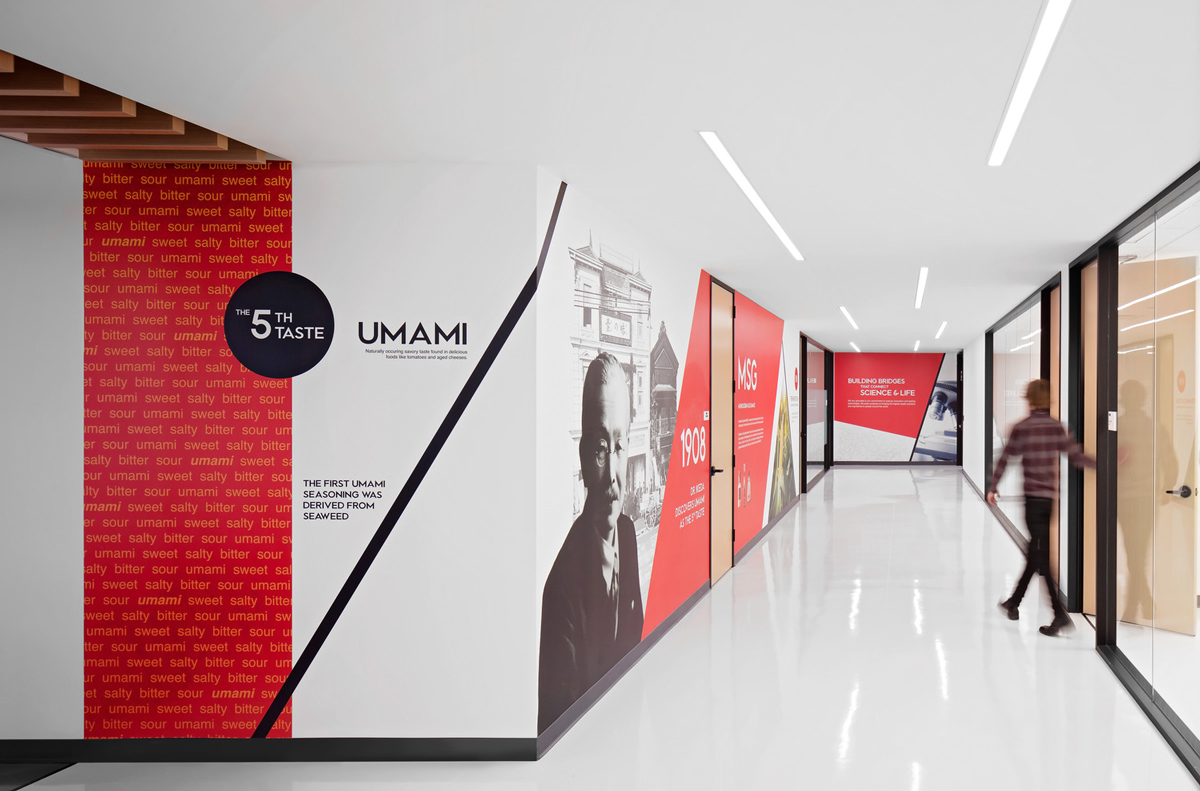
Storytelling
“Stories are a communal currency of humanity.” – Tahir Shah in Arabian Nights
Your physical space should communicate brand, mission, and values. Environmental graphics are an opportunity to inspire, inform and connect people to purpose. Whether it is a company’s history, mission or aspirational goals, story is a thread that can connect us.
Stay in Touch for Monthly Shive-Hattery Industry Insights

